
An Online Memorial ChapelIn devotion to the Holy Souls in Purgatory.



"Like other Protestants, Fundamentalists say Christ never appointed Peter as the earthly head for the simple reason that the Church has no earthly head and was never meant to have one. Christ is the Church's only foundation, in any possible sense of that term."
Lest we forget, there is only one Holy church, one faith, and one representative of Christ on earth given the right of succession by Jesus Christ and appointed by Him through Peter, the Apostle, who became the first Bishop of Rome, and through which officiate he and his successors have been charged to represent Jesus Christ on earth.
"Irenaeus, in Against Heresies (A.D. 190), said that Matthew wrote his Gospel "while Peter and Paul were evangelizing in Rome and laying the foundation of the Church." A few lines later he notes that Linus was named as Peter's successor, that is, the second pope, and that next in line were Anacletus (also known as Cletus), and then Clement of Rome. Clement of Alexandria wrote at the turn of the third century. A fragment of his work Sketches is preserved in Eusebius of Caesarea's Ecclesiastical History, the first history of the Church. Clement wrote, "When Peter preached the word publicly at Rome, and declared the gospel by the Spirit, many who were present requested that Mark, who had been for a long time his follower and who remembered his sayings, should write down what had been proclaimed." Lactantius, in a treatise called The Death of the Persecutors, written around 318, noted that "When Nero was already reigning (Nero reigned from 54-68), Peter came to Rome, where, in virtue of the performance of certain miracles which he worked by that power of God which had been given to him, he converted many to righteousness and established a firm and steadfast temple to God."
Peter's Chair in Rome remains today at the Vatican where his remains have been buried since his martyrdom in 67 AD.
"Saint Peter resided in Rome and suffered a martyr's death there in the year 67 A.D., at the time of the Christian persecutions during the reign of the emperor Nero. The exact place of his martyrdom is unknown. Historians believe Saint Peter was crucified upside down in Nero's amphitheater, which was situated where the Vatican now stands. He was buried at a nearby cemetery. Many years of excavations underneath the Basilica of Saint Peter led to the discovery of the first Pope's tomb. The tomb lies directly beneath the Pope's altar in the Vatican Basilica. This tomb signifies that each bishop of Rome is Saint Peter's successor and by virtue of his office as: ...the successor of Christ and the Pastor of the whole Church has full, supreme and universal power over the church. (Christus Dominus 2:9)" - Fr. M. Piotrowski, Society of Christ September 23, 2004.
Richard iii's devotion to his Catholic faith and to the Blessed Virgin Mary, along with his favorite Saints, are very well-known among Ricardians. A historical recreation of the type of Latin Mass Richard III would have been familiar with is depicted in this section. Richard was the last Catholic king to be killed in battle.
How might Richard have said the traditional Our Father in his Brummie dialect?
"Ar fairther, weege art in heaven, hallowed be thy nerm.
thy kingdom cum. thy wull be done in earth, as it is in heaven.
Giv' us this doy ar daily noggin. an' forgiv' us ar trespasses,
as we forgiv' them that trespass anent us. an' lead us not
into temptation, but deliver us frum evil.
for thine is the kingdom, the power, an' the glory, for ever an' ever. amen."
In the year of Our Lord, 2017, Catholics around the world paid homage to Mary during the 100th Anniversary of the Fatima Apparitions. For our part we added a devotional Lady Chapel for veneration, and also to honor Richard III's special devotion to Our Lady. It should be the duty of all faithful to
Pray the Rosary daily in accordance with the request of Our Lady of Fatima. The Rosary is the most powerful of all prayers. Both Richard iii and his mother prayed the Rosary as would have Richard's own niece, Blessed Margaret Pole, daughter of Richard's brother, George, Duke of Clarence, who she, who was so pious in her faith that it brought her martyrdom. Margaret Pole was declared "Blessed" for her faithful service to God by Pope Leo XIII, 29th December, 1886.
Richard III Plantagenet was born and died in the Roman Catholic faith as did most in England before him. His faith meant all to him and had he survived to see his great-grandnephew destroy the sanctity of the faith in England, King Richard III might have taken a stand in defense of the Holy Roman Catholic faith. Sadly, with Richard's strong faith and loyalty to God and the Holy Father, it is believed that he would have desired to be buried alongside his wife, Anne, and in the Roman Catholic faith. Richard III, at his re-burial should have had a full Roman Catholic Mass. He knew nothing of the Anglican church, Church of England, or of the destruction of the Catholic faith in his native land.
May God have mercy on the soul of Richard Plantagenet; eternal rest grant unto him, let perpetual light shine upon him, may he be forgiven of his sins and granted peace in the light of the Lord.
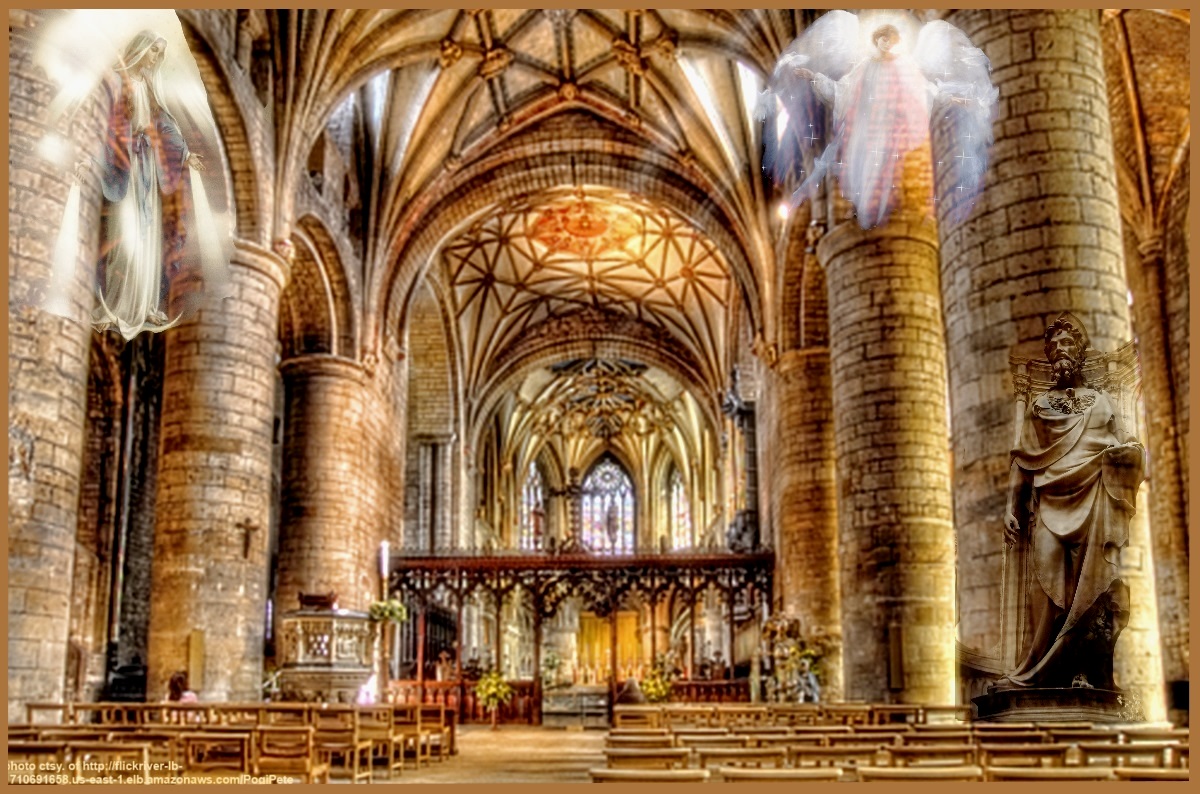
The Lancastrian soldiers fled into sanctuary at Tewkesbury Abbey and were followed by the Yorkist soldiers who slaughtered them inside the church with bloodshed so overwhelming that the Abbey had to be re-consecrated, which took place in 1471. The Yorkist soldiers were said to have ransacked and vandalized the Abbey following the savagery.
It is inconceivable that the Edward IV would have condoned this blasphemus brutality in a House of Worship, especially after having been met at the door, where he stood with sword drawn, by the Abbot who pleaded with him not to "defile a Holy place." Edward, then becalmed, said his prayers and then rose up and issued pardons to all of the enemy soldiers secured inside, including the Lancastrian leaders. As the abbey was not a rightful place of sanctuary, Edward, apparently, was within his rights to break word once he saw that the Duke of Somerset was one of those seeking shelter within. Before departing, Edward had Somerset and others with him dragged out and brought to the Market Square where they were tried by Richard of Gloucester, found guilty of treason, and executed. Edward had given his permission for Edward, Prince of Wales, son of Margaret of Anjou and Henry VI, slain in the prior battle by Edward's brother, Duke of Clarence, to be buried inside the Abbey.
Whether or not Edward condoned the behavior of his men, or was even present when his men commenced the slaughter, has not been thoroughly addressed. We know that Edward, himself, abided by the Abbot's request and had moved out. What is known, however, is that a massacre inside these sacred halls did take place. Perhaps Tewkesbury Abbey is the only Parish on record ever to be so viciously and mercilessly defiled in the name of God.
If Edward V would have lived and would have become King, England would have remained Catholic. Why? Because neither Henry VII or VIII would have ascended to the throne. The apparition of Our Lady of Walsingham has not returned to England, and may not until the Anglican Church converts back to the one true Church of Christ. The heinous murders of Archbishops, priests and nuns of the Catholic faith by order of Henry VIII destroyed any direct connection to God that once was.
Our Lady of Walsingham is revered in both the Catholic Church and high-church Anglicanism. The devotion originated from a Marian vision experienced in 1061 by Lady Richeldis de Faverches, a noblewoman in Walsingham, England. In her vision, Mary directed Lady Richeldis to have a replica of the Holy House in Nazareth built, which went on to become a significant pilgrimage site. In a devastating move, both for England and for the King's soul, Henry VIII, in 1538, had the original shrine destroyed during the Reformation.
Pray for this conversion, and for the Christians in the United Kingdom.
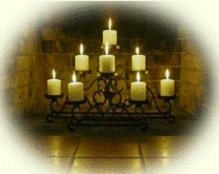
Click on the candles to light a candle in prayer for all the faithful departed souls.
Prayers for the dead and for the souls in Purgatory should be recited daily. Pray, too,
for the souls of our ancestors, and for those who perished in this beautiful Abbey following the Battle of Tewksbury.



At left, the tomb of Sir Hugh Baron le Despencer and Elizabeth Montacute. At center, the vaulted ceiling with Edward IV's Sunne in Splendour. At right, the high altar. Most of these early benefactors of Tewkesbury Abbey were Roman Catholic as the churches in England prior to the Reformation were of Roman Catholic faith. At the Dissolution of the Monasteries, the last abbot, John Wakeman, surrendered Tewkesbury Abbey on 9 January 1539 to the commissioners of King Henry VIII. Had he not done so would have surely meant his beheading. His effortless coordination with the proceedings earned him an annuity of 400 marks from the king, followed with his being ordained in September 1541 as the first Bishop of Gloucester. The Abbey now belongs to the Church of England. For the sake of his memory, the Memorial Chapel of Angels reflects on the Catholic faith of Richard III and many of our royal and noble ancestors, and honors the Abbey, as the Catholic church it was during the Battle of Tewkesbury and during Richard's reign.
Enchanting videos of Tewkesbury Abbey. The first is an aerial tour of the Abbey, and the second video gives a brief history with the tour.
This would have been the original Roman Catholic Latin Mass, before the Tridentene Mass, which Richard III would have attended.
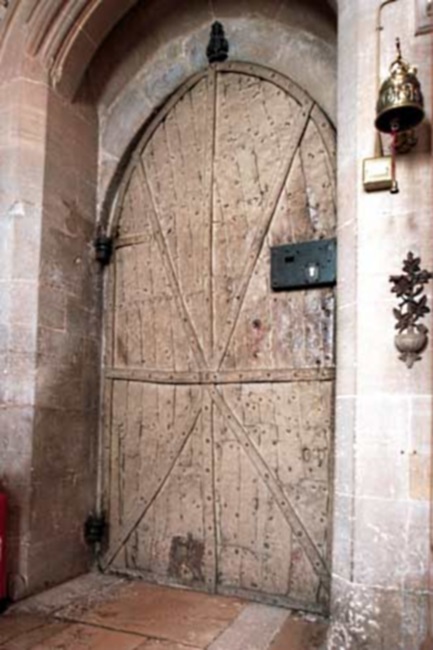
As it was soonafter the battle, the door was shielded with the armor of Lancastrian soldiers and prisoners.
The holes are from bullets and arrows. The door remains today as it was then, a grim reminder of battle,
and the last Yorkist victory.
After his private execution for treason on 18 February 1478, ordered by his own brother, King Edward IV, George, Duke of Clarence, received the Manor of Tewkesbury when he married Isabel, daughter of Richard Neville, the kingmaker. In 1439, the manor passed down through the Beauchamp family and then to the Nevilles from Anne, Countess of Warwick. Upon George's death, the Manor at Tewksbury first passed to his oldest son and then was eventually returned to the Countess and remained partially held by her until her death in 1490, at which time the manor became property of the crown; Henry VII Tudor. The Duke of Clarence and Isabel where entombed at Tewkesbury Abbey, in an underground vault covered by a grate behind one altar. Over the centuries, the vault was subjected to decay due to the frequent lowland flooding of the Severn River. When Henry VIII became king and ordered the "Dissolution of the Churches," Tewkesbury Abbey was vandalized and laid to ruin but not before Tudor's men stormed the vault and absconded with whatever befit the king including and, perhaps, a pair remains that may have belonged to George and Isabel. Another set of remains belonging to the church Alderman and his wife and son, were found inside the vault upon it's last opening in 1849, however, the Plantagenet/Neville remains were not present and to this day the mystery of their disappearance and whereabouts remains unsolved. All that remained in the vault aside from two other sets of remains that had been cleaned up and tested, and proven to belong to a much older man and woman, was an empty and broken stone coffin. An article by Pauline Pogmore of the Yorkshire Branch of the Richard III Society entitled "Them Bones, Them Bones," provides more insight and can be read in the Archive section in the footer.
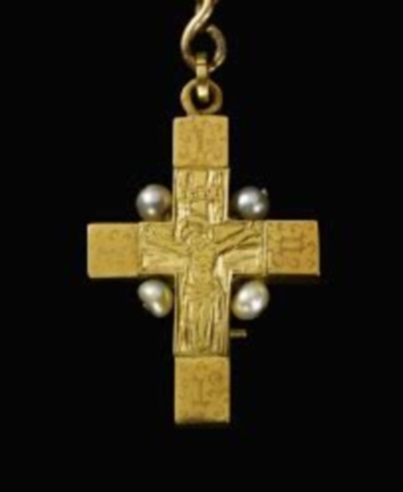
Clare Cross in Suffolk, is where Richard's mother, Cecily Neville resided. The Clare Reliquary is housed in the Royal Collection Trust, the Queen's Gallery, Buckingham Palace.
"Richard III beheld devotions to the Blessed Virgin Mary, to St. John the Baptist, to the Holy Angels, to St. Ninian, et. al., his devotion greatly displayed in his gifts and annuities to the Houses of Worship he protected. His family kept Trust as follows: "This cross contains a cavity which once housed fragments of wood believed to derive from the True Cross on which Christ was crucified. It may have belonged to Cecily, Duchess of York, mother of Edward IV and Richard III, as it was discovered near her Suffolk residence, Clare Castle. Here gold has been used to honour the sacred relic within."
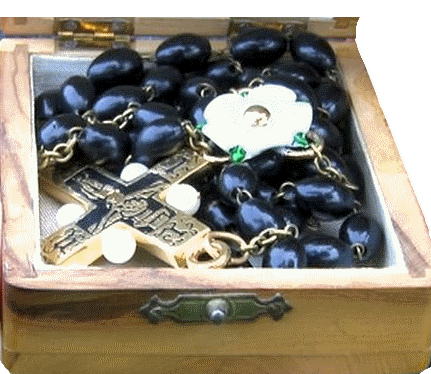
A STATEMENT FROM JOHN ASHDOWN-HILL "We have lots of evidence that Richard III was a prayerful man", John told us. "And also specifically that he was concerned with prayers for the dead - both for his dead relatives and for himself, when he died. Therefore I've been concerned from the very beginning of the Looking for Richard Project that his remains, if found, should be treated as he would have expected. It distresses me very much that no-one at the University of Leicester (which laid claim to all responsibility for the bones) seems to have any respect for, or understanding of, what Richard would have wanted - even though actually it's well documented. Richard's mother was buried with a Plenary Papal Indulgence, and I explored whether we could get one for Richard III. But I was advised by the Papal Nuncio that it would probably be regarded as inappropriate to issue one at this stage (they are normally granted while the individual is living). So I explored with Leicester Cathedral the possibility of burying Richard with a rosary and with certain relics. The relics I had in mind were a relic of St Francis (because Richard had originally been buried in the Franciscan Priory) and a relic of the Holy Cross. Leicester Cathedral would not agree to the inclusion of the relics. I don't know why. However, they did agree to accept a rosary. And a rosary is a physical and concrete symbol of prayer, so I was pleased they said yes to that."

FROM THE LAMBETH PALACE LIBRARY: "Books of Hours formed an important aspect of lay devotion in mediaeval England and included a series of prayers to be recited at specific hours of the day, paralleling the offices recited by monks, nuns and clergy, and thus helping the laity to unite their devotions to the church's liturgy. The image forms part of the frontispiece of the 'Hours of the Virgin' from King Richard's prayer book, a special section of prayers and devotions in honour of the Virgin Mary. The historiated initial portrays Mary wearing a blue robe (a colour suggesting purity and traditionally associated with her) kneeling at a desk draped in scarlet. Her hands are held in a posture of prayer and she appears to have a prayer book open before her, all of which can be seen to suggest her piety and openness to the angel's message. The angel Gabriel is also portrayed kneeling, and looking up towards Mary, a posture which points to the reverence due to her as well as her special vocation to become the mother of Christ. On her head Mary is wearing a wreath of flowers, which can be seen to allude to her traditional title of 'Queen of Heaven'. This particular Book of Hours is of special significance as its first known owner was King Richard III and it is thought that it would have been kept in his tent at the Battle of Bosworth. The volume includes a prayer which was apparently written by Richard in the first-person singular, praying for deliverance from various forms of affliction, sickness and danger. According to Professor Eamon Duffy, this was, in fact, a variation of a prayer which was included in many fifteenth-century primers and could be traced back to the Valois Dukes of Burgundy. However, an adaptation of this was included in Catholic prayer books following the Council of Trent, and came to form an important aspect of lay piety in the Counter-Reformation period. [E. Duffy, Marking the Hours: English People and their Prayers, 1240-1570 (Yale, 2006), 100]"
"Lord Jesus Christ, deign to free my, your servant King Richard, from every tribulation, sorrow and trouble in which I am placed, hear me, in the name of all your goodness, for which I give thanks, and for all the gifts granted to me, because you made me from nothing and redeemed me out of your bounteous love and pity from eternal damnation to promising eternal life"
"O God who converted the people of the Picts and the Britons through the teaching of holy Ninian your confessor to the knowledge of your faith, grant of your grace that by the intercession of him by whose learning we are deepened in the light of your truth we may obtain the joys of heaven. Through Christ our Lord. Amen"
Email:
info@kingrichard3.com
We would like to extend a special thank you to artist, Graham Turner, for his permission to use copies of his paintings herein. Mr. Turner retains his own personal copyright for his work and cannot be duplicated here without his written consent.
Philippa Langley: Richard III's Staunch Defender. "I am sick to death of the humiliation that is being heaped upon this anointed king."
Richard's followers believe that he has been found guilty all these centuries without any proof to substantiate such claims. Now, 2025, damning evidence may prove otherwise and seal the Plantagenet king's legacy forever.
Photos and information on this website are the property of www.kingrichard3.com excepting photos and information submitted by persons retaining their personal information.
Photos and information are subject to the "Fair Use" copyright law unless otherwise stated, in which case no reproductions will be allowed without the written consent of the owner.
© Copyright 2016 by www.kingrichard3.com. All Rights Reserved. Design by Anariel Designs
